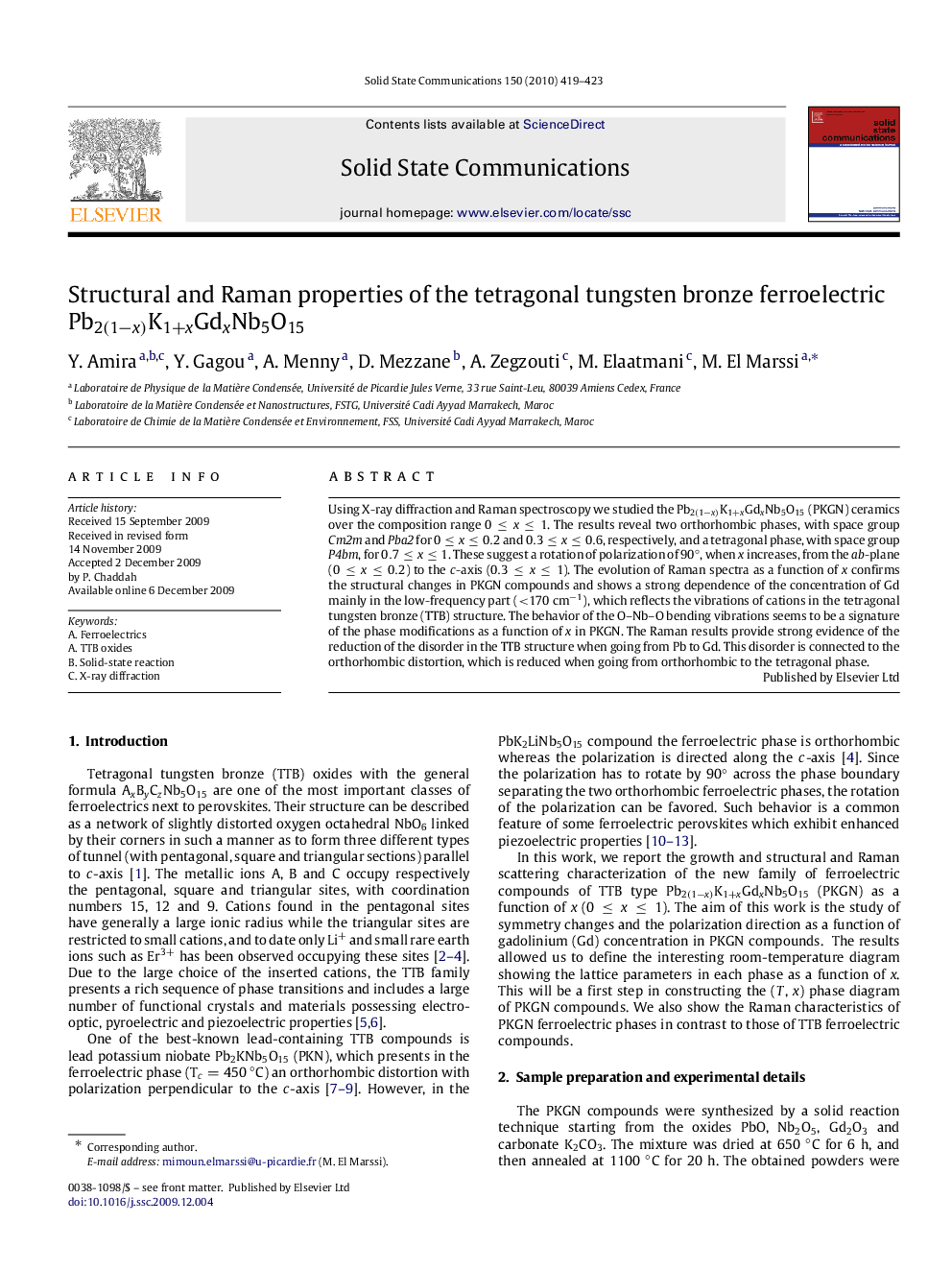| Article ID | Journal | Published Year | Pages | File Type |
|---|---|---|---|---|
| 1594254 | Solid State Communications | 2010 | 5 Pages |
Using X-ray diffraction and Raman spectroscopy we studied the Pb2(1−x)K1+xGdxNb5O15 (PKGN) ceramics over the composition range 0≤x≤10≤x≤1. The results reveal two orthorhombic phases, with space group Cm2m and Pba2 for 0≤x≤0.20≤x≤0.2 and 0.3≤x≤0.60.3≤x≤0.6, respectively, and a tetragonal phase, with space group P4bm , for 0.7≤x≤10.7≤x≤1. These suggest a rotation of polarization of 90∘, when xx increases, from the ab -plane (0≤x≤0.20≤x≤0.2) to the cc-axis (0.3≤x≤10.3≤x≤1). The evolution of Raman spectra as a function of xx confirms the structural changes in PKGN compounds and shows a strong dependence of the concentration of Gd mainly in the low-frequency part (<170cm−1), which reflects the vibrations of cations in the tetragonal tungsten bronze (TTB) structure. The behavior of the O–Nb–O bending vibrations seems to be a signature of the phase modifications as a function of xx in PKGN. The Raman results provide strong evidence of the reduction of the disorder in the TTB structure when going from Pb to Gd. This disorder is connected to the orthorhombic distortion, which is reduced when going from orthorhombic to the tetragonal phase.
